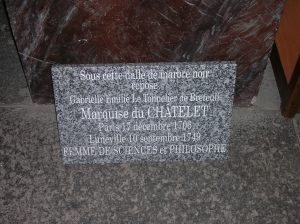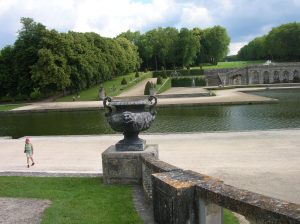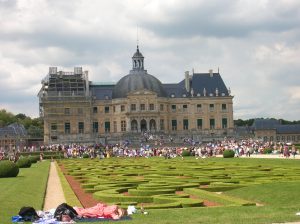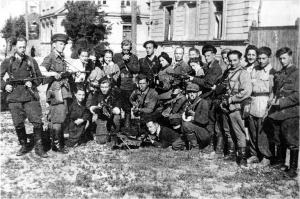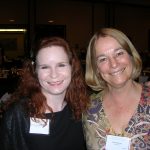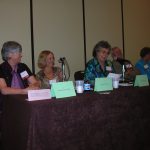I’m now in Strasbourg, France. My brain is on overload, and my stomach is on overeat at this point, and it’s nice to have a day of both mental and gastronomical fasting!
The day before yesterday I visited the chateau where I set the epilogue of my novel-in-progress. I walked around saying to myself, “this is Delphine’s house,” and “this is Lili’s room,” even though the two main characters in THE LAWS OF MOTION are fictional creations. To me, the fact that a very real and very frightened Louis XVI and Marie Antoinette stopped at Etoges on their failed attempt to flee Versailles has less resonance than Lili and Delphine’s footsteps in the worn depressions of the marble stairs and the echoes of their voices in the salon.
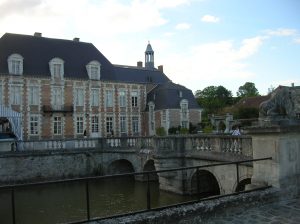
From there, I went on to Cirey-sur-Blaise, in many respects the ground zero of this trip. This is the ancestral home of the Marquis du Chatelet, Emilie du Chatelet’s husband, and it is here that Emilie lived with Voltaire for fifteen years, first as lovers then as friends (with her husband’s full support–a complicated arrangement, but workable in those times). I saw their library and study, their dining room, and the theatre they constructed in an attic space, where they and their guests performed Voltaire’s plays and Emilie sang the lead role in operas. Apparent her memory and her voice were two more astonishing things about her, in addition to her brilliance as a mathematician and physicist. So great was the couple’s renown that some of the most important people in France braved the four-day journey from Paris to this incredibly remote location in Champagne just to be in their company.
I had arranged a private tour of the chateau, since high tourist season doesn’t start until July 1. I was aware that the owner-occupant of Cirey did not speak English, so I’d been dusting off my French to make the tour work. Although she spoke in rapid fire, I understood almost everything she said, and when I asked questions or made comments (in complete sentences no less!) I was pleased she understood me every time. Of course later that evening, I was so tired I couldn’t have found my own head if I’d had to ask for it in French, but no matter! Because it isn’t clear at this

point which interior shots I am permitted to post, I’ll show only a shot of myself outside with Madame. She’s holding a copy of LES QUATRE SAISONS, the French translation of THE FOUR SEASONS.
As I expected, people who visit Cirey are primarily interested in it as the home of Voltaire. If they have heard of Emilie at all, she is usually a footnote in the great writer’s life–his companion, his supporter, his muse. For me, of course, it’s the opposite. My novel, The Laws of Motion, is not directly about her, but about the daughter she died after giving birth to at age forty-three, right at the point her work had catapulted her into the top echelon of scientists in Europe. Her translation of and commentary on Newton’s Principia is still the standard edition in France today. There’s more about her on the pages for The Laws of Motion on this site.
On the way to Strasbourg I made a brief stop at the palace at Luneville, where Emilie du Chatelet died. She is buried under the floor of the parish church there, and it was deeply moving to come to pay my respects. And now, it’s on to Ferney, where Voltaire lived after her death. Located right outside Geneva, it was in a good spot for him, since he lived more or less continually under threat of arrest for his caustic commentaries on French society. From Ferney, he could make a quick dash across the border, as I too will have to do in about a week’s time to catch the plane for home.
